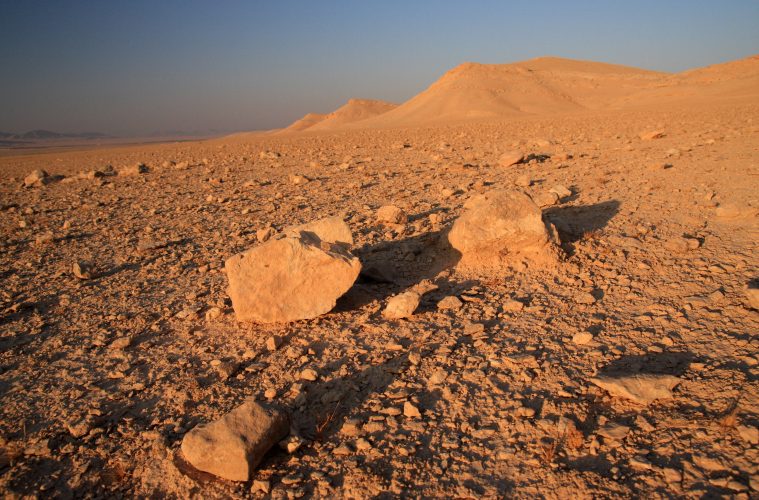At the Sochi Summit last month, Vladimir Putin hosted the leaders of Iran and Turkey, apparently in a bid to draw up a plan for peace in Syria. Following the meeting, Putin told reporters that the civil war would soon come to an end after raging for almost seven years.
President Bashar al-Assad’s forces now control over 70% of Syria, including all major cities besides Raqqa. Opposition, both moderate and extremist, is crumbling. More that 470,000 people have lost their lives – a third of which is comprised of civilians. To date, there are 5.4 million registered Syrian refugees. War crimes, including sexual violence, torture, chemical warfare and the targeting of civilians, have been well documented.
The outbreak of conflict in Syria is traditionally attributed to ethnic-religious tensions, the Arab Spring and proxy war. But over the past several years, figures from Barack Obama to Russell Brand and Prince Charles have all suggested that global warming might be a more appropriate explanation.
Suggesting that climate change is the sole cause of the conflict is to grossly oversimplify things. However, mounting evidence suggests the climate-conflict link should not be written off entirely.
In the late 2000s before violence erupted in Syria, regional drying, caused in large part by rising global greenhouse gas emissions led to a severe drought in Syria. No longer able to cultivate the land, the country’s rural population moved en masse to the cities in search of employment. Syria’s urban centers, however, did not have the infrastructure, jobs, housing and food supplies to accommodate these new arrivals. Deteriorating conditions in cities helped to create widespread resentment towards the Assad regime, sparking protests, riots and eventually, a civil war.
Syria lies in the ‘Fertile Crescent’, a region home to some of the earliest evidence of human civilization. Surrounded by desert, the Crescent is known for its moist and fertile lands.
The three-year period from 2006 to 2009 was the driest on record, with 22% less rainfall than the historical average.
One effect of this drought was mass migration to Syria’s cities. In 2009, the UN claimed that between 40,000 and 60,000 Syrian families had been forced to migrate as a direct result of drought. But other estimates put this figure as high as 1.5 million between 2007-10.
Agricultural communities were woefully unprepared for the decline in rainfall. In the early 2000s, President al-Assad implemented a number of pro-market policies that removed subsidies and protection mechanisms for farmers. State farms were privatized, and fuel and fertilizer soon became largely unaffordable. Even before the drought took hold, a 2008 World Bank study showed that Syria’s agriculture was in decline, largely because of Assad’s reforms.
While it is clear that climate change did cause drought and urbanization in Syria, proving its link to violence is more difficult. Data and testimony to make this final connection is limited. However, lessons from the past and present show that environmental stress can drive tensions in society.
Here in France, the bloody revolution of 1789 in part owes its occurrence to a bread shortage brought about by a series of bad harvests. In this instance, it was a volcanic eruption in Iceland and the subsequent Little Ice Age as opposed to global warming which put farmers under increased pressure.
More recently, the ongoing conflict in Darfur, which has taken the lives of up to 300,000 Sudanese people since 2003, has also been linked to climate change. Some also credit global warming with the arrival of jihadist extremists, Boko Haram, in West Africa.
A 2007 UNEP report explained that desertification can lead to conflict, because it places “unavoidable pressure on people through migration, displacement, food insecurity and impoverishment.”
With regards to the conflict in Syria, Laurence Tubiana, a lead negotiator at the COP21 Conference in 2015 and current lecturer at Sciences Po, believes climate change has undoubtedly played a role.
“The drought coincided with the resentment of much of the population towards the authoritarianism, murders, and brutality of the Assad regime,” she said. “It is never one cause but it was certainly a factor.”
With the World Resources Institute predicting that, by 2040, nine Middle Eastern countries will suffer from ‘extreme’ water stress, Tubiana is convinced that climate difficulties will drive further conflict in the region:
“When you see projections for future water shortages in the region, you cannot imagine that it will not provoke conflict.” ♦
SAM BRADPIECE is a graduate student at Sciences Po, studying Journalism and Environmental Policy.

